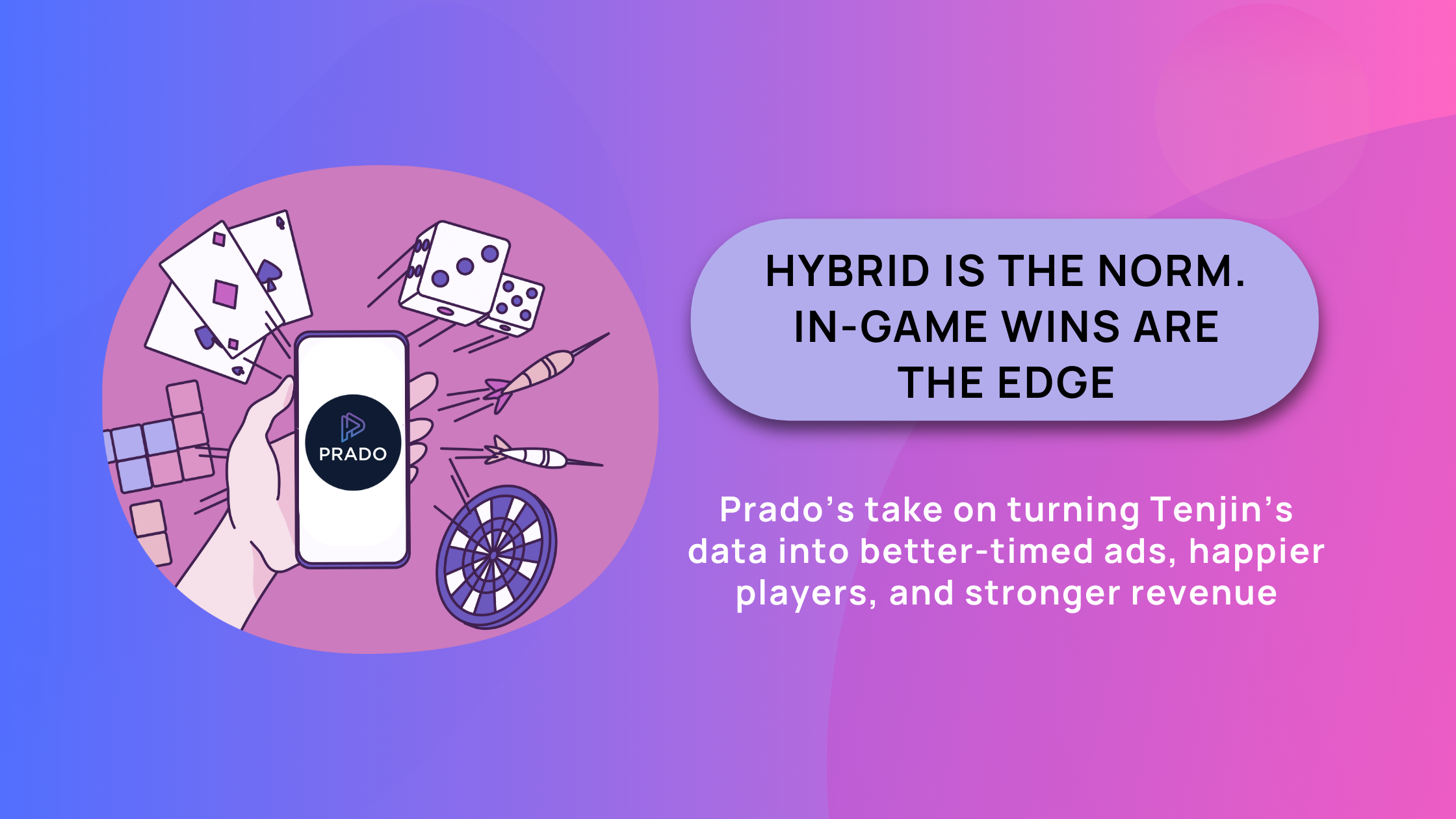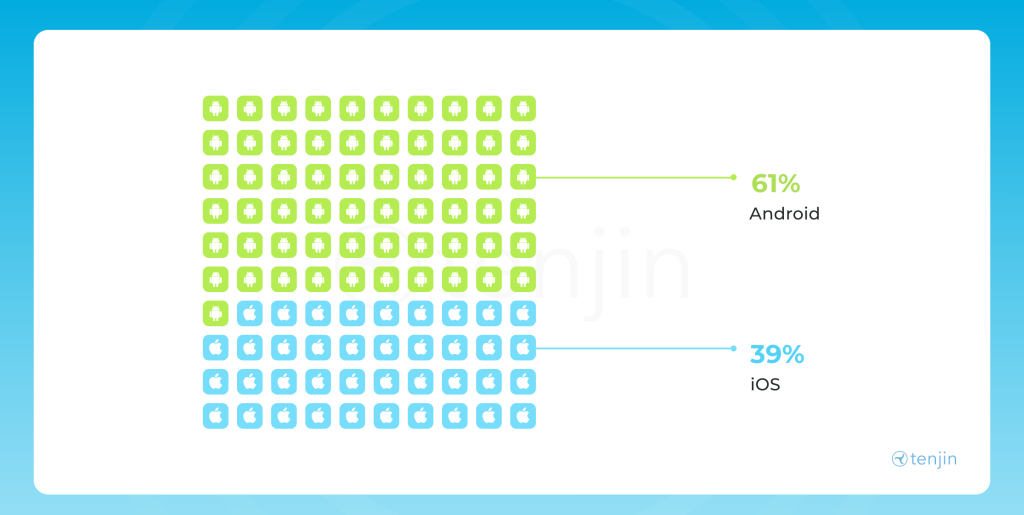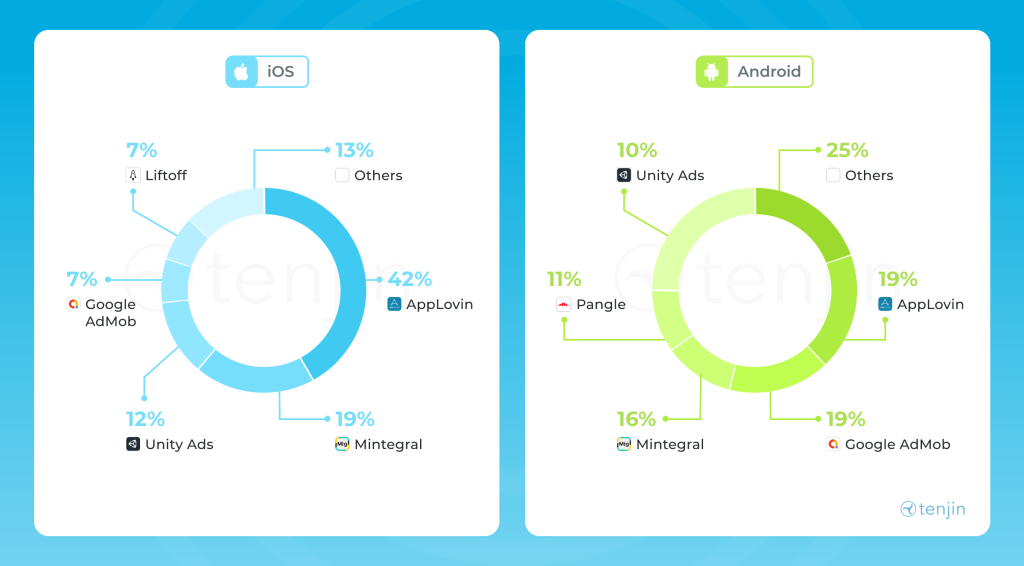Benchmarks Are In. Now What? Turning 2025 Gaming Ad Data into Session Wins For 2026

If you’re a mobile game publisher, monetization lead, or UA/brand marketer planning 2026 budgets, this one is for you: a quick Prado lens on what the new benchmarks actually mean for your sessions and revenue.

2025 at a glance 👀
Hybrid is default: Tenjin’s latest Ad Monetization in Mobile Games Benchmark Report 2025 shows in-app ads are now a core revenue pillar, with a mix of ad revenue and in-app purchases becoming the normal way to make money from games, that’s the baseline Prado designs for, not the exception.
Mobile still leads: Newzoo forecasts $188.8B in global game revenue for 2025, with mobile at about $103B (55% of the pie), the attention pool Prado taps with brand-safe, ad campaigns designed around the moments inside a play session, not just around showing as many ads as possible.
Measurement is standardizing: IAB’s Gaming Measurement Framework finally gives brands a common language for formats and metrics across gaming, and Prado aligns its reporting directly to that matrix.
Prado POV: Great benchmarks, but they only tell you if you are ‘typical’, not if you’re winning. Prado focuses on pushing your sessions above those curves. We do that by building for the session, not just the impression: prioritizing ad moments that feel natural (after a win, on a pause screen, or between levels), matching messages to what players like to do, and keeping the buying path clean and privacy-aware so quality stays high.

Benchmarks = the floor, not the finish line 🏁
Let’s translate these into three design questions:
Session design: Are rewarded, interstitial, and playable placements aligned to natural breaks in play, not just timers, this is the first thing Prado adjusts when we enter a stack.
Pressure vs. experience: Are you optimizing session health (retention, reviews, time-in-app) alongside eCPM, the way Prado encourages partners to monitor retention, session time, and sentiment alongside revenue metrics when testing ad strategies?
Proof, not just delivery: Are your KPIs mapped to the IAB framework so brands can compare gaming fairly against other channels and match what Prado shows in its campaign evidence?
If any of those are ‘not yet, you’re probably leaving money, or player goodwill on the table, which is exactly where Prado can add lift.
How Prado uses this data in practice 📊
Prado sits on top of these 2025 benchmarks to stand out from generic in-app supply and:
Tune sessions, not just stacks
Our partners control when ad requests fire; Prado brings better demand and clearer reporting to the moments they choose, so when an app shows ads after wins, level completes, or pauses, we can prove how those choices impact attention and revenue, not just fill and eCPM.
Route premium demand to premium moments
Brand suitable campaigns hit the highest attention slots, not every available impression, so your best inventory is attached to the strongest demand.
Report in the new standard language
Our campaign evidence mirrors the IAB Gaming Measurement Framework, so marketers see how in-game results map cleanly into their broader media plan and KPI taxonomy.
Want to sanity-check your current ad stack against 2025 benchmarks to elevate your 2026 planning?
Send us your top formats + three core KPIs here: “Stress-Test My Monetization Plan” and we will show you how Prado would reframe them at the session level.

.png)




